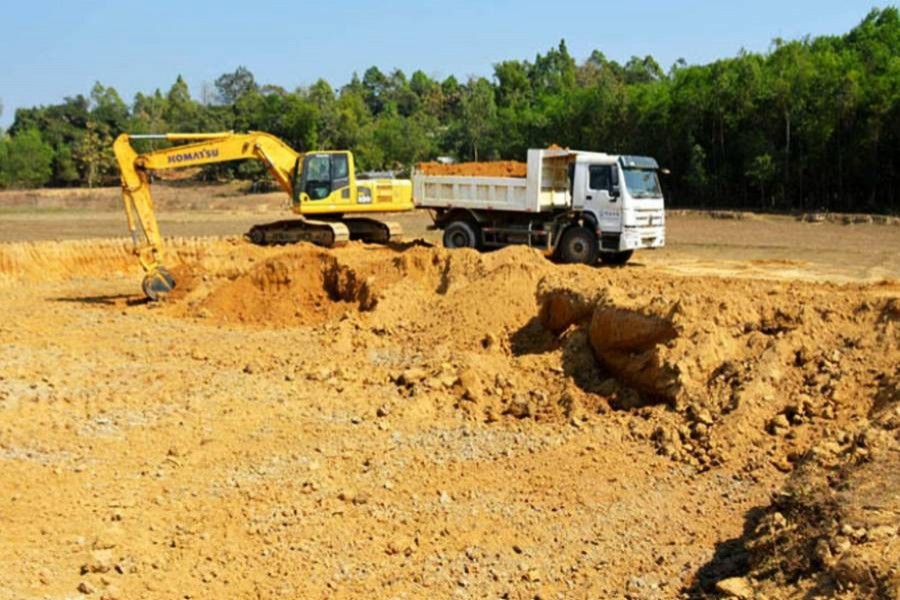The importance of soil can better be understood if one discovers oneself in a desert or an arid expanse with no plants or vegetation. Human civilisations have found their origins and flourished on or near river banks because of the fertile land close at hand. Behind the high concentration of population on this deltaic plain lies the rich alluvial soil. But now comes the most alarming news that this land-scarce country with an oversize population has been causing its soil the most mindless damage humanly possible. Nature has within it a mechanism for replenishing the soil erosion caused by natural calamities but the manmade degradation of soil is mostly irreversible unless lands are treated carefully and under a comprehensive plan. There has been a consistent attempt to get foods, cereals in particular, from farm lands notwithstanding soil's mindless use.
That soil quality is becoming poorer over the years was known but this is for the first time three scientists of the state-run Soil Resource Development Institute (SRDI) has come up with a study to determine the exact nature of soil's loss of quality. Reports published on the basis of their research paper could not paint a bleaker picture of the country's soil. According to the study, soil organic matters as high as 78.7 per cent of the country's landmass have registered a decline. Let it be noted that the organic matters are the main source of soil's nutrition, binding elements of soil particles providing water-holding capacity in those. This degradation of soil has taken place in 75 per cent of the country's geographical area. Acidification and arsenic contamination top the list of causes adversely affecting soil health with 54.8 and 30 per cent respectively. It is clear that indiscriminate use of chemical fertilisers and pesticides is primarily responsible for such large-scale soil degradation.
The overwhelming emphasis on cultivation of high yielding varieties (HYV) of paddies year after year without the required treatment lands need has rendered agricultural soil deficient in nutrients and microorganisms. So has been the water that comes in contact with the residues of fertilisers and pesticides through rain-wash or inundation of the croplands. It is clear that total avoidance of use of such chemical substances is still impossible but limiting their application for growth of crops is the best option. Biosolids and organic fertilisers have successfully been used for augmenting harvests of different crops including food grains. With further advancement of agriculture science and technology of cultivation, there is a possibility of minimising the use of chemical fertilisers and pesticides if not elimination of their application.
Meanwhile, there is a need for strengthening the research base of agriculture universities in the country, which have not been as keen in soil research as they are in development of new varieties of crops or introduction of exotic fruits and vegetables. The SRDI should also go for expansion of its range and scope of research in order to develop systems and technology geared to improving soil quality. Before this happens, the traditional methods of alternative cropping and nitrogen fixation process through bean and dhaincha (sesbania bispinosa) cultivation may be promoted.


